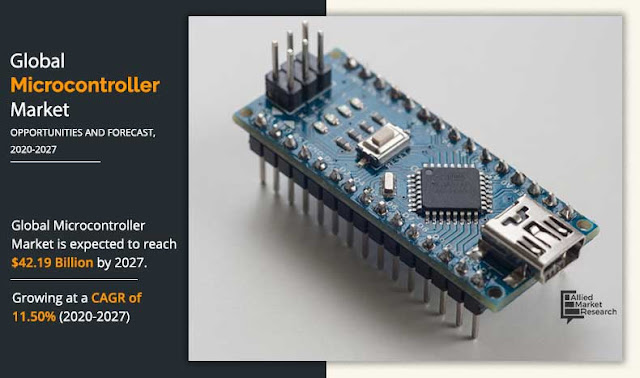Surge in need for power management
devices and rise in incorporation of power electronics components in electric
vehicles drive the growth of the global power electronics market. However,
complex processes of incorporation in advanced electronics devices hinder the
market growth. Furthermore, increase in demand for plug-in electric vehicles
(PEVs) is expected to create new growth opportunities for the market players.
According
to the report published by Allied Market Research, the global power electronics market generated $23.25 billion
in 2019, and is estimated to reach
$36.64 billion by 2027, registering a CAGR of 5.7% from 2020 to 2027. The report offers an extensive
analysis of changing market dynamics, key winning strategies, business
performance, major segments, and competitive scenarios.
Covid-19 scenario:
- Several major market
players have halted the production of power electronics devices amidst
lockdown due the Covid-19 pandemic. There has been the supply shortage of
raw materials such as silicon carbide and gallium nitride.
- The demand for power
electronics is likely to decrease from the power industry. This is due to
closure of most of the industrial units in which there has been huge
demand for power.
The
report offers a detailed segmentation of the global power electronics market
based on device type, material, application, end-user, and region.
Read Full News: https://www.alliedmarketresearch.com/power-electronics-market
Based on device type, the power module segment contributed
to the largest share in 2019, accounting for nearly half of the total share,
and is estimated to maintain its dominant position during the forecast period.
However, the power discrete segment is estimated to portray the highest CAGR of
7.4% during the forecast period.
Based
on material, the silicon carbide segment accounted for the largest share in
2019, holding more than one-fourth of the total share, and is expected to
maintain the largest share throughout the forecast period. However, the gallium
nitride segment is expected to register the highest CAGR of 7.8% from 2020 to
2027.
Based
on region, Asia-Pacific contributed the highest
share, accounting for nearly half of the total market share in
2019, and will maintain its dominance throughout the forecast period. In
addition, this region is expected to grow at the highest CAGR of 6.7% from 2020
to 2027. The report also analyzes regions including North America, Europe, and
LAMEA.
Leading market players analyzed in the research include Fuji Electric Co, ABB Group, Microsemi Corporation, Infineon Technologies AG, Renesas Electronics Corporation, Mitsubishi, STMicroelectronics, Rockwell Automation, Toshiba Corporation, and Texas Instruments Incorporated.









